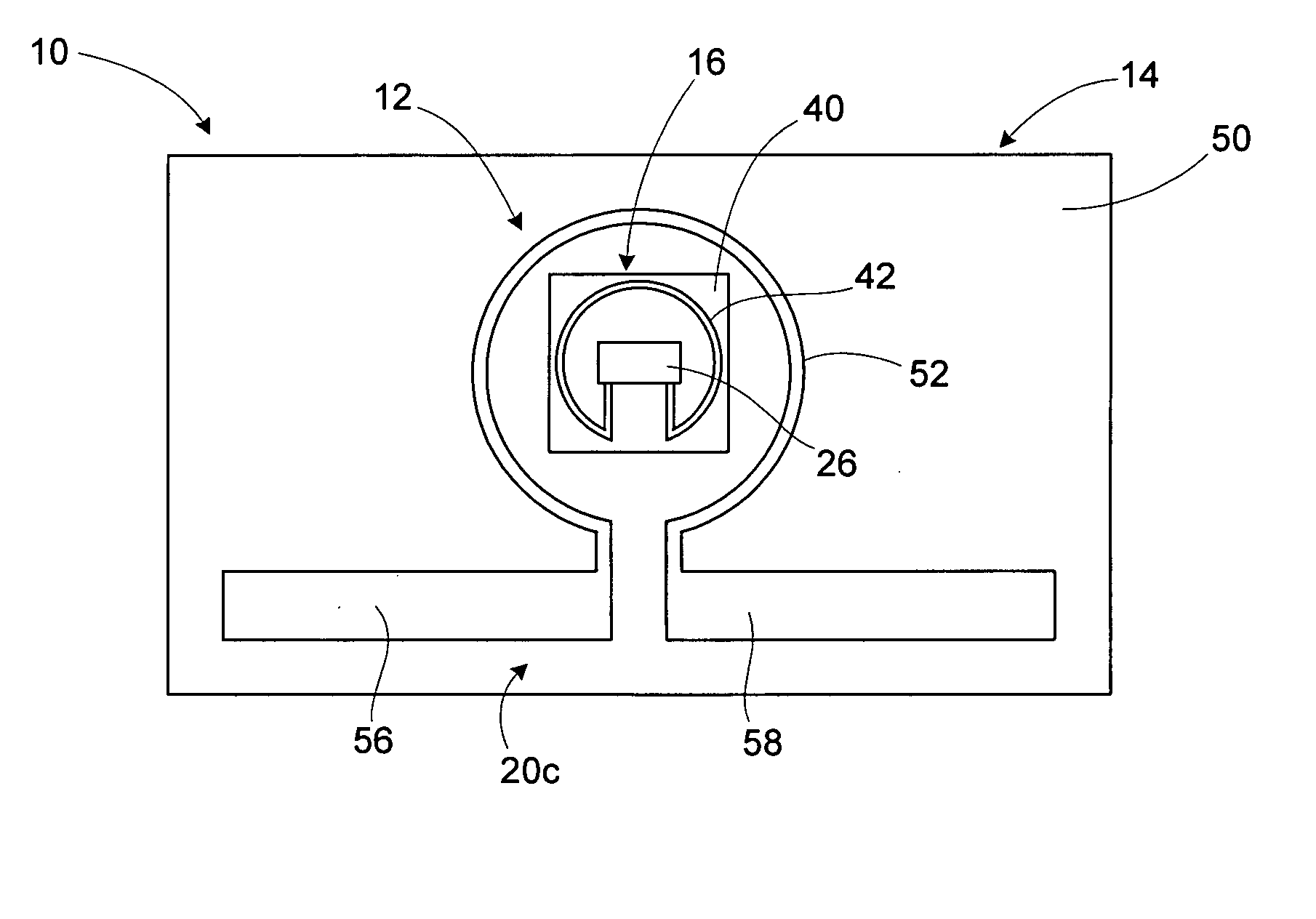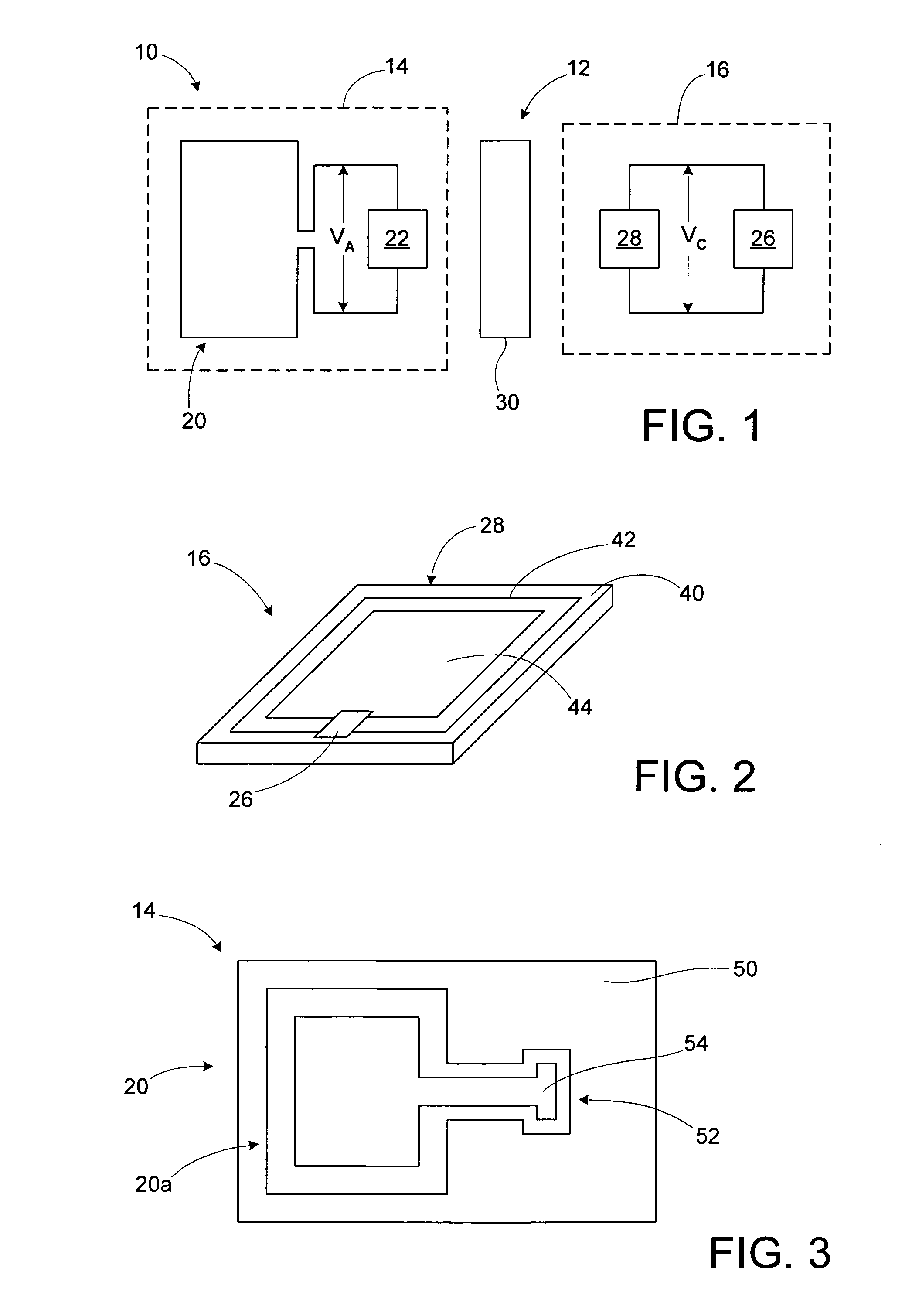RFID device with magnetic coupling
a magnetic coupling and rfid technology, applied in loop antennas, electrical apparatus construction details, instruments, etc., can solve the problems of large area reducing the accuracy required for placement of ics during manufacture, and serious limitations in high-speed manufacturing of ic placement and mounting
- Summary
- Abstract
- Description
- Claims
- Application Information
AI Technical Summary
Problems solved by technology
Method used
Image
Examples
Embodiment Construction
[0028] An RFID device, such as an RFID tag or label, includes a magnetic coupler between an interposer or strap, and an antenna. The interposer or strap includes a transponder chip and an interposer magnetic coupling element that is operatively coupled to the transponder. An antenna portion magnetic coupling element is operatively coupled to the antenna. The magnetic coupling elements together constitute a magnetic coupler that is used to magnetically couple the transponder chip of the interposer to the RFID antenna. A high permeability material may be used to enhance the magnetic coupling between the magnetic coupling elements. The magnetic coupling elements may be conductive loops. The conductive loops may be single-turn conductive loops. Alternatively, one or both of the conductive loops may have multiple turns, thus being conductive coils. The use of multiple-turn conductive loops or coils allows the magnetic coupler to function as a transformer, with the voltage across the ante...
PUM
 Login to View More
Login to View More Abstract
Description
Claims
Application Information
 Login to View More
Login to View More - R&D
- Intellectual Property
- Life Sciences
- Materials
- Tech Scout
- Unparalleled Data Quality
- Higher Quality Content
- 60% Fewer Hallucinations
Browse by: Latest US Patents, China's latest patents, Technical Efficacy Thesaurus, Application Domain, Technology Topic, Popular Technical Reports.
© 2025 PatSnap. All rights reserved.Legal|Privacy policy|Modern Slavery Act Transparency Statement|Sitemap|About US| Contact US: help@patsnap.com



